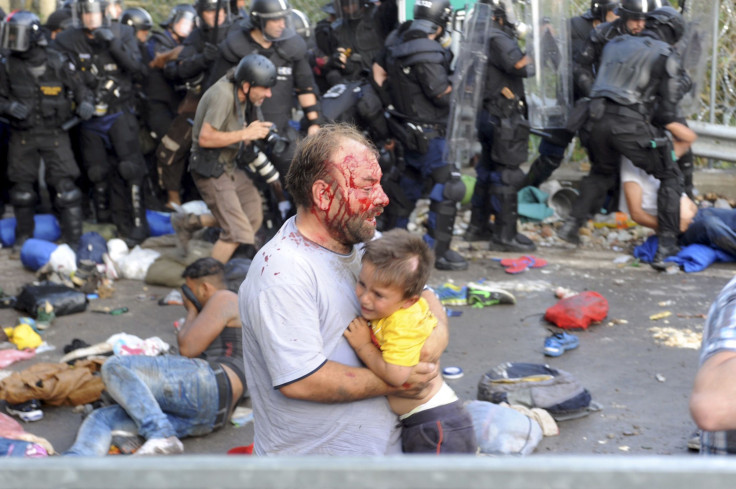Refugees Stream Into Croatia After Clashes On Hungarian Border

Over 6,000 refugees streamed into Croatia after Hungarian security forces on its border with Serbia sealed the border and beat back refugees trying to storm the wall with rubber bullets, water cannons and tear gas, police said Thursday.
Two people were seriously injured, and hundreds more needed treatment. Three international journalists were also beaten back by Hungarian police on Wednesday, according to local media reports.
Serbia’s Prime Minister Aleksandar Vučić accused Hungary of resorting to brutal tactics and accused the country of abdicating its commitments to the European Union. “We will not allow anyone to humiliate us. I call on the European Union to react, for its members to behave in line with European values,” he said on state television, according to the Guardian. “If the EU does not react, we will find a way to protect our borders and European values as well.”
Thousands of refugees fleeing war and chaos in Syria, Iraq and Afghanistan have arrived at the Horgoš border crossing between Serbia and Hungary. While Budapest was always critical of EU policy and decried what it saw as a cultural invasion, it took the drastic step of shutting off the border crossing Wednesday.
Hungarian government spokesman Zoltan Kovacs defended Hungary’s erection of the barbed-wire fence and the police actions, and called on other countries to do the same.
“Hungary is not going to just let people go through its territory and that’s what we’ve achieved. If everybody took care of their external borders, all European member states, especially those who have a Schengen border, the situation would be very different,” he said, according to the Guardian. “We don’t like the fence. But it seems to be working to protect the country’s borders, to stop illegal migration. Obviously we are going to continue with that -- keeping the fence, protecting the fence by police ...That’s what we will do -- to reinforce the external protection of European borders.”
EU migration commissioner Dimitris Avramopoulos condemned Hungary’s actions. “Walls are temporary solutions. You have seen yourself that this only serves to divert flows or escalate tensions. Violence is not the solution either,” he said in Budapest on Thursday. “The majority of people arriving in Europe are Syrians. They are people in genuine need of our protection. There is no wall you would not climb, no sea you would not cross if you are fleeing violence and terror.
“Let me be frank with you, this is not a problem that is going to go away any time soon. Let’s make sure we are on the right side of history,” he added.
Many refugees do not wish to stay in Serbia, since its asylum system lacks the ability to cope with the unprecedented influx of refugees that Europe is facing.
On Tuesday, Croatia, which also shares a border with Serbia, promised to welcome refugees and expedite their passage through to northern Europe. The latest reports said that over 6,200 people had arrived in Croatia as of Thursday.
The aid agency Médecins Sans Frontières (MSF) said that most of those who had gathered at the Horgoš crossing had left after the show of force, but up to 1,000 people still remained. “Using such excessive force against vulnerable people to prevent them from seeking safety is a disgrace and utterly shameful,” MSF displacement advisor Aurelie Ponthieu said.
© Copyright IBTimes 2025. All rights reserved.



















